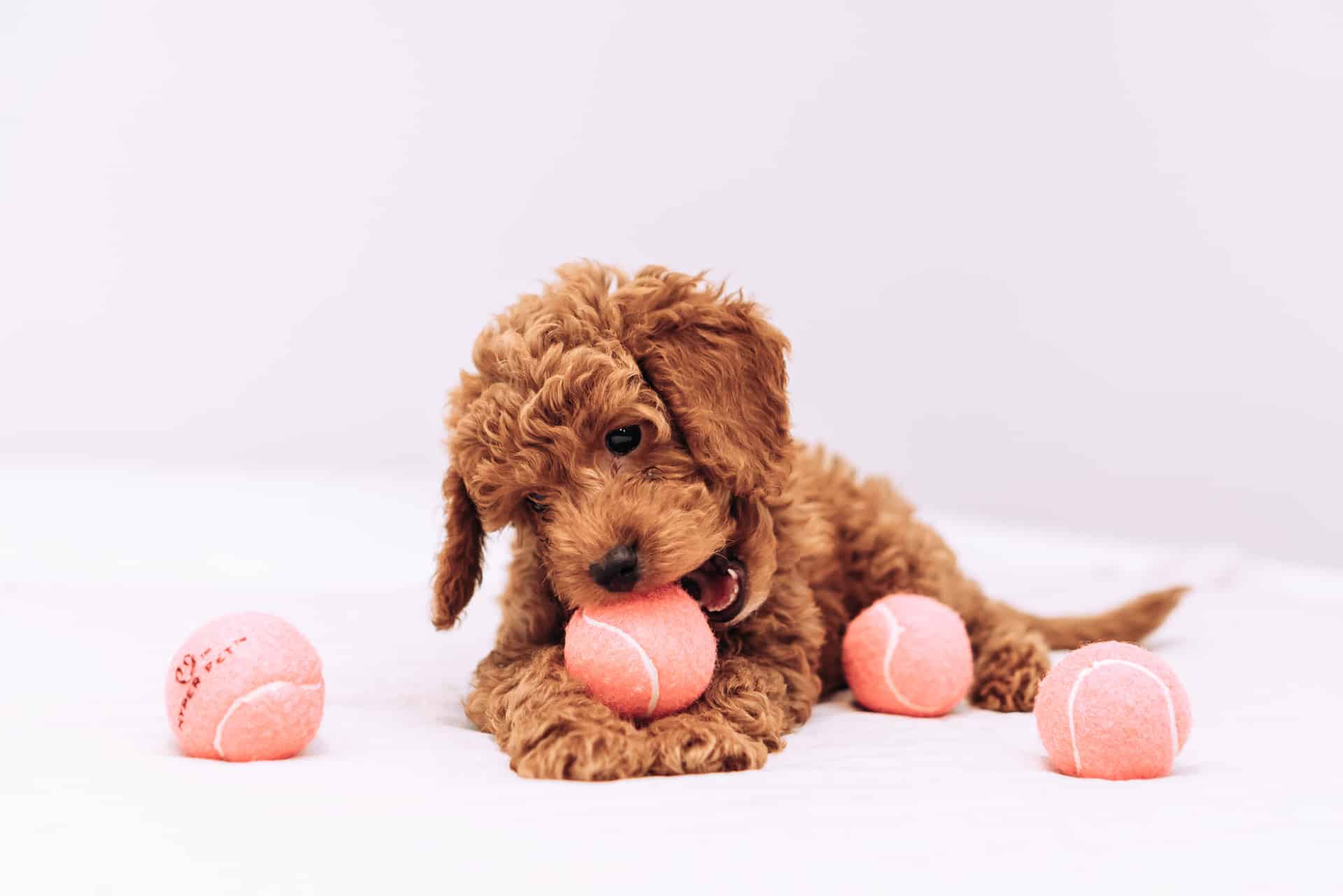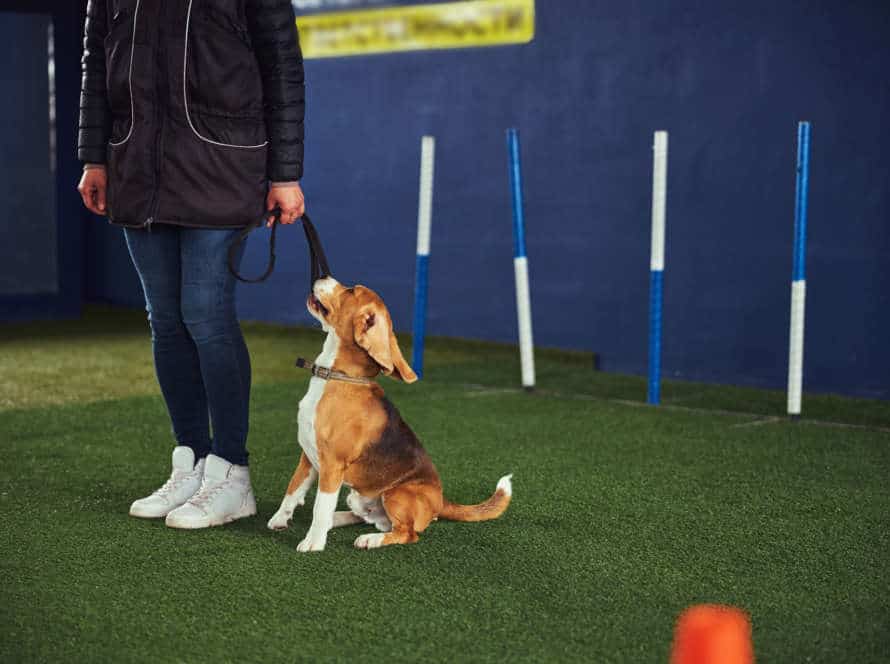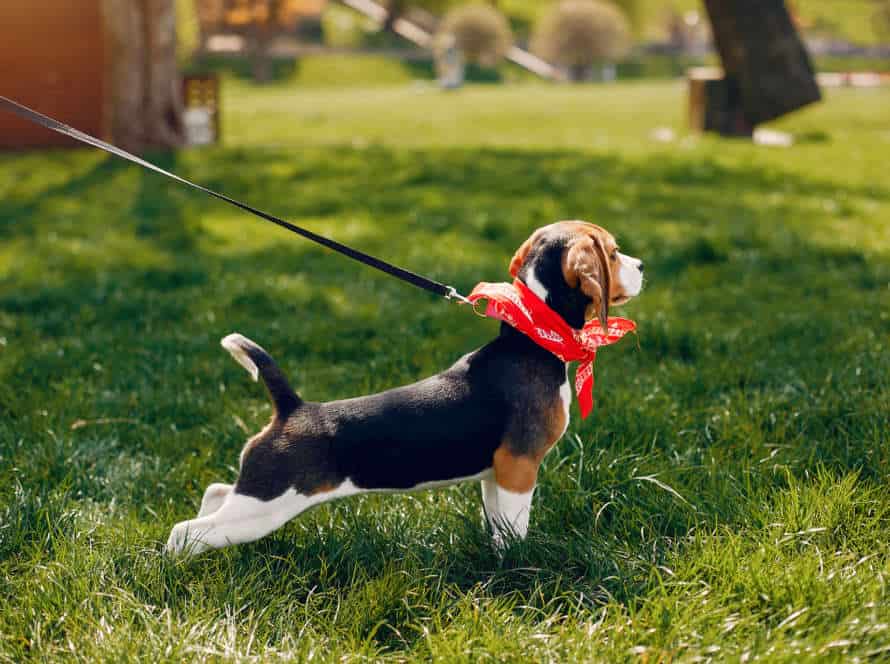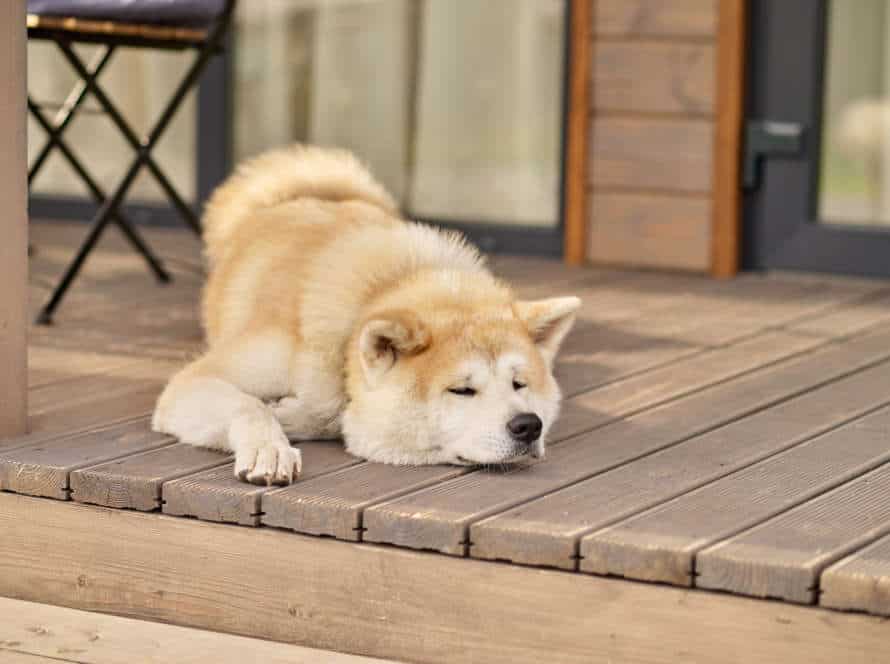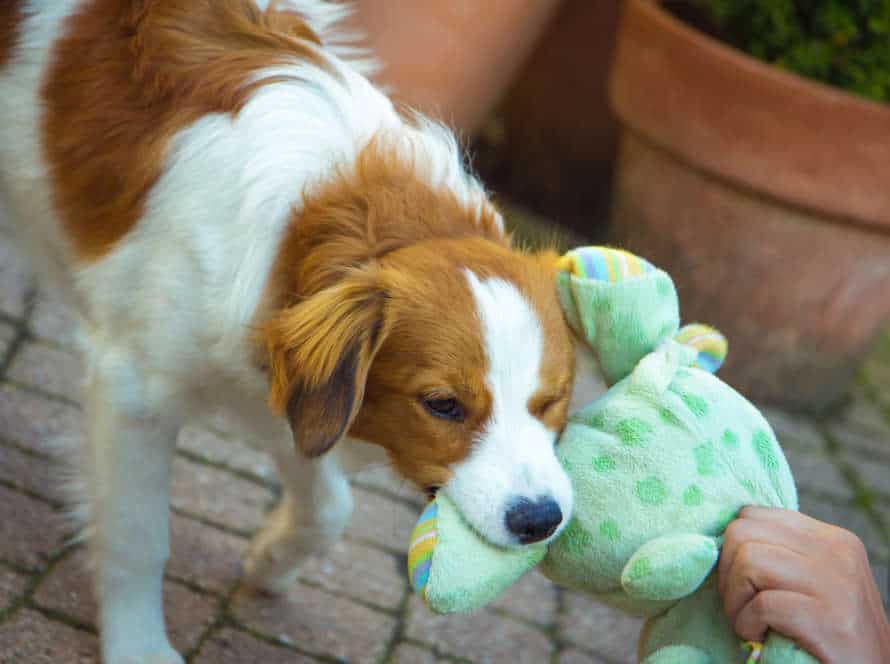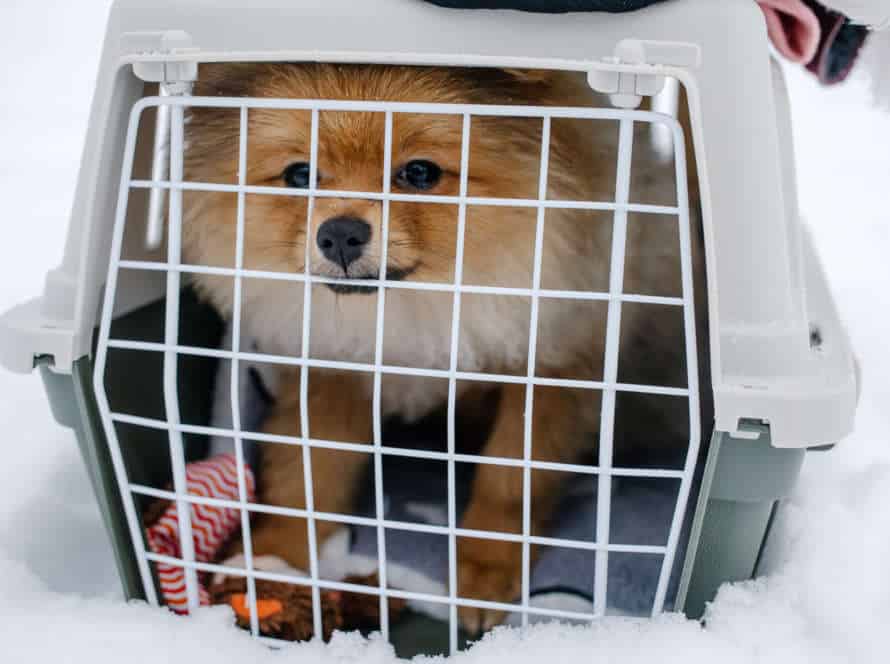The Role of Chew Toys in Redirecting Puppy Biting and Teething
Chew toys have a big job: they help puppies with teething and biting. You can save your stuff from being chewed up by providing the right toys. Chew toys also give puppies mental and physical exercise. Here’s how to choose the best one:
- Get toys that fit your puppy’s age and breed.
- Don’t get toys that are too hard or soft.
- Buy chew toys made of rubber, nylon, or hard plastic.
- Get a mix of textures and shapes.
- Watch your pup when they chew and take away broken toys quickly.
By following these tips and giving your puppy chew toys, you can help them and keep them healthy and happy.
Understanding Puppy Biting and Teething
Puppy biting and teething can be an issue for pet parents. But, there is help! Chew toys are a great way for young pups to ease teething pain. They can also be used to redirect biting behaviour. So, to comprehend how chew toys affect puppy biting and teething, it’s vital to understand the basics of pup development.
Why do puppies bite?
Why do puppies bite? Teething is the biggest reason! To help them, chew toys are a must. Select toys that fit their age and size, are durable and non-toxic. Don’t get anything small enough to swallow or break.
Pro Tip: Train your puppy! Offer positive reinforcement and redirect bad behavior to good play.
When do puppies teeth?
Puppies start teething between 3-6 weeks of age. It can last up to 8 months! During this time, they may have sore gums, chewing problems and a strong urge to chew on stuff.
Chew toys can help with teething and redirect puppy biting. Look for toys made from soft, flexible materials – gentle on their teeth and gums. Rotate the toys regularly to keep them engaged. Avoid hard or sharp objects that can harm their teeth and gums. Supervise them when chewing to prevent choking and destructive behavior. By providing appropriate chew toys, you’re helping to redirect their biting and teething urges and promoting healthy oral hygiene!
What are the consequences of inappropriate biting and chewing?
Inappropriate bite and chew in puppies can have bad effects. Pups have a natural inclination to bite and munch, particularly during teething. But if left unchecked, it can cause destruction, aggression, and health issues.
Here are some possible results of inappropriate puppy bite and chew:
- Harm to property and possessions, such as furniture, carpets, shoes, and electronics.
- Physical harm to people and other animals in the home.
- Dental and digestion problems for the puppy, when ingesting strange objects can lead to choking, blockages, and infections.
- High stress and frustration for the puppy and the pet owners, causing a tense relationship.
To avoid these outcomes, it is essential to divert a puppy’s bite and chew behavior with suitable chew toys, offer enough exercise and mental stimulation, and think about enrolling the puppy in training classes with a professional dog trainer.
Benefits of Chew Toys
Puppies have a natural instinct to chew. Chew toys give them something safe and appropriate to chew on. These toys can bring a number of benefits, like redirecting puppy biting and teething. Let’s examine the benefits of chew toys for puppies.
Reducing undesirable biting and chewing behaviors
Chew toys are essential for redirecting a puppy’s biting and teething. Like infants, puppies explore the world by putting things in their mouths. It is important to provide them with an appropriate toy to satisfy their biting and chewing needs.
Benefits of Chew Toys:
- They offer a safe and healthy option for puppy’s need to bite and chew.
- Also clean teeth and gums, preventing tartar build-up and dental issues.
- Chew toys can improve the puppy’s mental and emotional well-being. Reducing boredom and stress.
When buying chew toys, make sure they are size-appropriate, durable, and made from non-toxic materials. Encourage the puppy to play with them and supervise during playtime. With the right selection and supervision, you can successfully redirect the puppy’s biting and chewing behavior.
Promoting healthy dental development in puppies
Chew toys? All puppies need ’em! They’re essential for healthy dental development and redirecting biting and teething behavior. Benefits include:
- Removing plaque and tartar to keep teeth and gums healthy.
- Relieving pain and discomfort from teething.
- Redirecting biting, so your furniture stays safe.
When choosing chew toys, get ones that are durable and safe. No small parts or toxic materials. And interact with your pup while they play. That way you can train, bond, and promote healthy development.
Pro Tip: Rotate chew toys to keep your pup engaged.
Providing mental stimulation and stress relief
Chew toys are essential for mental stimulation and stress relief, especially for puppies teething or biting due to boredom or anxiety. Here are their benefits:
- Soothing Teething Pain: Chew toys help puppies relieve the discomfort and irritation of teething. Plus, they satisfy their natural urge to chew.
- Stress Relief: Like humans, puppies can experience stress. Chew toys keep their minds off their negative emotions and redirect attention to play and stimulation.
- Mental Stimulation: Chew toys give puppies a challenge to keep their minds active and sharp.
- Redirection of Biting: Puppies love to nibble and bite things, like furniture and shoes. Chew toys direct them to safe items they can play and chew on.
Pro Tip: Choose chew toys that are suitable for your puppy’s age, breed, and chewing strength. Monitor them while they play with chew toys to avoid any accidents.
Reinforcing positive chewing behavior
Chewing is natural for pups, specifically those who are teething. Giving them chew toys not only changes their biting, but also helps with oral health and how they feel emotionally. Chew toys help remove plaque and tartar, massage gums and help them relax by giving them an outlet for chewing.
Here are some tips to help:
- Choose toys that fit your dog’s biting style.
- Give them different textures and tastes to keep them interested.
- Encourage your pooch to play with the toy with treats and reward them when they do.
- Replace their toy if it’s worn out or broken to avoid any choking hazards.
Remember, using chew toys can help stop bad chewing and bring you and your furry friend closer. Pro tip – Always watch your pup when they play with chew toys to make sure they’re safe.
Types of Chew Toys
Puppy biting and teething? Chew toys can be great! They come in many types. Each type has its own benefits. Let’s look at the various types of chew toys and how they help with teething and biting.
Rope Toys
Rope toys are a must-have for puppies and dogs who like to chew and bite. These tough toys can handle their aggressive chewing. Here are four types:
- Knotted rope toys come in many shapes and sizes. They are made of cotton or nylon and perfect for playtime.
- Dental rope toys have ridges and nubs that clean teeth and massage gums.
- Tug rope toys are for playing tug-of-war and satisfying their natural urge to chew.
- Ball rope toys keep your dog entertained with a ball or other chew toy.
Rubber Toys
Rubber toys are a great pick for any pup parent in need of sturdy, secure chew toys for their pet pal. Types of rubber chew toys? We got ’em!
- Hollow rubber toys: Perfect for stuffing with treats. Their shape is ideal for playing fetch or tug-of-war.
- Solid rubber toys: If your pup has a powerful bite, these are the ones for them. Larger dogs and teething pups will love ’em.
- Dental chew toys: Promote dental health and fresh breath while satisfying your pup’s urge to chew.
- Squeaky rubber toys: Provide sensory stimulation and entertainment for pups that love to play and chew.
Chew toys are perfect for pup biting and teething. They’ll take attention away from shoes, furniture, and other household items. Pick the right one for your pup based on size, age, and chewing habits.
Plush Toys
Plush toys are popular for redirecting puppy biting and teething. But, it’s important to pick the right one for your pup’s needs. Here are the types of chew toys and their roles:
- Plush toys: Soft and cuddly; great for comfort and play, but not for heavy chewing.
- Rubber toys: Durable, ideal for heavy chewers, and can ease teething discomfort.
- Rope toys: Knotted rope toys are great for play and cleaning puppy teeth.
- Treat-dispensing toys: These can keep pups engaged and away from biting or teething.
Always supervise your pup while they play and switch up the toys regularly. This prevents boredom and encourages healthy chewing.
Edible Toys
Edible toys are an ideal way to deter your pup’s biting and teething behavior. Not only are these toys fun for your furry friend, but they also provide a safe outlet for chewing, reducing the risk of damaging furniture or other items. Here are some of the top edible toys to try:
- Rawhide chews – This chew is made from the inner layer of cow or horsehides and comes in a variety of shapes and sizes.
- Natural bones – Beef or chicken bones are rich in calcium, and their texture satisfies dogs’ chewing needs.
- Antlers – These are high in calcium and phosphorus and are a great option for heavy chewers.
- Bully sticks – Made from dried bull muscle, bully sticks are high in protein and low in fat. They last several days and provide a good chew.
When selecting chew toys, make sure you supervise your puppy when they are using the toy for the first time. This will ensure they don’t choke or swallow anything they shouldn’t.
How to Choose the Right Chew Toy
Selecting the correct chew toy for your pup is vital. It can divert biting and teething. There are many types of chew toys on the market. Knowing which one is best for your puppy is essential. Here, we’ll talk about the different kinds of chew toys and how to pick the right one for your pup.
Size and Durability
Choosing the right chew toy for your pup? Size and durability are a must!
- Size matters: not too small to choke on, not too big to fit in their mouths. Try for a toy bigger than their mouth, but not too large.
- Pups have sharp teeth and strong jaws; durability is key. Look for toys labeled ‘durable’ or ‘heavy-duty’, made from rubber or nylon.
- Get the right size, durable toy and you can direct biting and teething away from destructive items and towards a safe, enjoyable toy!
Texture and Material
When selecting a chew toy for your pup, think about the texture and material. Make sure it’s secure and helpful in diverting their biting and teething habits.
Texture: Get a chew toy that is hard enough to satisfy your pup’s need to chew, but soft enough to avoid any damage to their teeth. A ridged or bumpy texture will massage their gums. A knotted texture will give them something to grip and chew.
Material: Avoid toys made from hard plastic or rubber. They can break into sharp pieces and hurt your pooch if they swallow them. Choose natural materials such as rubber, nylon, or latex. They should be free of dangerous chemicals and dyes.
Pro Tip: Change your pup’s chew toys regularly. Keep them entertained and stop destructive chewing behavior.
Safety Concerns
Safety is number one when choosing chew toys for your pup. Not all chew toys are made equal and some can be a potential health hazard. Here are a few safety tips to bear in mind:
- Avoid hard plastic chew toys. They can break and cause choking or puncture wounds.
- Say no to toys with small parts that can break off.
- Opt for chew toys made of rubber or nylon. These are more durable and less likely to splinter.
- Check for any chemicals or substances that may be toxic to dogs.
- Always supervise your puppy during playtime and replace chews that are damaged or worn out.
Pro tip: Ask your vet or dog trainer for advice on safe and effective chew toys for your pooch!
Introducing Chew Toys to Your Puppy
Introducing chew toys to your pup? A great move! They’re designed specially for pups. The texture and material helps them explore, learn, and develop their teeth and jaws. With proper introduction and supervision, chew toys can be the perfect way to satisfy your pup’s teething and biting needs.
Encouraging your puppy to use chew toys
Encourage your pup to use chew toys! It’s a great way to redirect their biting habit and fulfil their teething needs. Chew toys are key for healthy chewing and preventing destruction. Here’s how to introduce them:
- Choose toys with different textures, shapes and sizes.
- Show your pup the toys and let them sniff and explore.
- Attract their attention with a treat or a game.
- Praise them when they use the toy and redirect them when they try to bite people or things.
- Provide positive reinforcement and playtime to make them more appealing.
Pro tip: Rotate chew toys every few days to keep them engaged.
Monitoring your puppy’s use of chew toys
It’s essential to watch your pup’s use of chew toys. Here are some hints:
- Introduce them progressively, beginning with soft ones like rubber toys or knotted ropes.
- Always be there when pup plays with the chew toys – to prevent them from swallowing small pieces or choking on bigger ones.
- Rotate the toys regularly – to keep pup interested and stop destructive habits.
- Check the toy size in relation to pup’s size and age. Too small toys can be a choking hazard, and too big ones can be difficult for pup to manage.
- Give lots of positive reinforcement and approval when pup chews their toys instead of furniture or such.
Keeping an eye on pup’s chew toy use ensures they’re safe and used properly. This can help stop destructive chewing and redirect teething.
Replacing damaged or unsafe chew toys
Replace any damaged or unsafe chew toys to keep your pup safe and stop them from chewing things they shouldn’t. Here are some tips:
- Choose chew toys made of strong materials that can handle your puppy’s chewing.
- Be careful with toys that have small pieces or strings as these can be swallowed and cause choking.
- Regularly check for signs of damage, like cracks, tears, or missing pieces, and replace them.
- Rotate your pup’s chew toys to keep them interested and avoid boredom.
- Chew toys are important for fulfilling your puppy’s natural urge to chew and reducing bad behavior, so invest in good quality toys they love.
Alternatives to Chew Toys
Chewing is a natural thing for puppies. It’s usually because of teething or learning to bite with care from their mum or siblings. To help them stop, people who train dogs and pet owners use chew toys. But, there are other options too! This article talks about some of the alternatives to help puppies stop biting or teething.
Teaching appropriate play behavior
It’s vital for puppies’ physical and mental growth to learn proper play habits. Chew toys are an important part of this process. But, there are alternate ways to redirect their teething and biting. Here are a few:
- Frozen treats like apples and carrots can cool their sore gums and give them a yummy snack.
- Puzzle toys that reward with treats can give their brains and bodies a challenge.
- Playing with humans like fetch and tug-of-war can create a strong bond, plus direct energy into appropriate play.
Alternatives to chew toys can help puppies learn suitable play behavior and offer healthy coping methods for their biting and teething. Remember to supervise and praise puppy for good behavior.
Providing appropriate teething items
Puppies chew on things during teething, even things they shouldn’t! To stop furniture and shoe destruction, give your pup the right teething items. Here are some examples:
- Frozen washcloth: Soak it, wring it out, freeze it – the cold will help soothe sore gums.
- Fruits and veggies: Carrots and apples make great teething items. Freeze them and let your pup chomp away.
- Rubber toys: Look for tough rubber toys made to be chewed on, like Kongs.
Always supervise your puppy when they’re chewing something to avoid choking or ingesting non-food. If your pup consistently chews on non-toys, take them to a vet in case of dental issues.
Redirecting your puppy’s biting behavior to appropriate chew toys
Redirecting your pup’s biting to the right chew toys is vital to stop harmful behavior. Chew toys are essential for developing healthy chewing habits. Here are some alternatives:
- Frozen fruits or veg – soothe teething pain and hydrate.
- Rope or tug toys – great for interactive games and releasing energy.
- Bones – clean teeth and satisfy natural urge to chew. Make sure they’re appropriate for size/age.
Supervise your pup while they play with chew toys. Consistency + positive reinforcement key for teaching correct chewing behavior.
Frequently Asked Questions
Q: What are chew toys?
A: Chew toys are toys that dogs can safely chew on without hurting themselves or damaging their teeth.
Q: What is the role of chew toys in redirecting puppy biting and teething?
A: Chew toys provide a safe outlet for a puppy’s natural urge to chew and bite, which helps to redirect their attention away from furniture, shoes, and other items they may be tempted to chew on.
Q: How do I choose the right chew toy for my puppy?
A: Look for chew toys that are specifically designed for puppies and made of durable, non-toxic materials. Avoid toys that are too small and could become a choking hazard.
Q: When should I give my puppy a chew toy?
A: Puppies can start chewing on toys as early as three weeks old. It’s important to monitor your puppy while they are chewing on a toy to ensure they are not at risk of swallowing any parts that could cause choking or intestinal blockage.
Q: Can chew toys help with teething?
A: Yes, chew toys can help to soothe teething puppies by providing a safe object to chew on and massage their sore gums.
Q: Are there any risks associated with giving my puppy chew toys?
A: While chew toys are generally safe for puppies, it’s important to choose toys that are appropriate for their age and size. Always supervise your puppy during playtime and regularly inspect the toy for signs of wear and tear that could pose a choking hazard.

